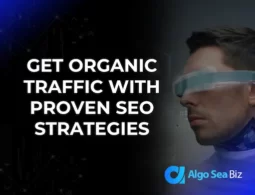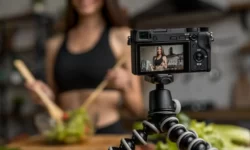How Social Media Ads Work
In the age where our screens buzz with notifications, and our mornings start with scrolling feeds, it’s clear: social media isn’t just a trend, it’s a lifestyle. Picture this: almost everyone you know, from your young niece to your grandmother, is on some form of social media. It has woven itself into the fabric of our daily lives. Given its pervasive nature, businesses have recognized an invaluable opportunity: social media advertising. But what is it? At its heart, social media advertising is a way for brands to reach us, the users, by blending seamlessly into our feeds, making product discovery or announcements feel more personal and less like a billboard on a highway.
The Mechanics of Social Media Advertising
Ever wondered why you see certain ads? It’s not magic; it’s data. Social media platforms are like digital goldmines of information. They note what we like, where we click, and even how long we stare at a post. By using this user data, platforms can pinpoint ads to specific groups, ensuring we see content most relevant to us. But it doesn’t stop at targeting. Advertisers bid for a spot on your feed in what’s called an auction system. They’re not just bidding money, but also relevance. Platforms want users to have a good experience, so ads with better relevance scores (or higher ad quality) often get better placements, even if their bid is lower. In essence, relevance and quality can trump budget!
Different Types of Social Media Ads
Navigating the world of social media ads might seem like stepping into a bustling market. There are many options, and each one has its unique flavor. Let’s simplify things and look at the common types of ads you might encounter.
Display ads vs. native ads:
- First up, we have display ads. Think of them as billboards on the social media highway. They’re clearly ads, and they aim to catch your eye as you scroll.
- On the flip side, we have native ads. These are a bit like chameleons. They blend in with the content around them, making them look and feel like a regular post. The idea? To offer a seamless and less disruptive experience for users.
Carousel ads, video ads, story ads, and more:
- Carousel ads let you swipe through multiple images or videos in a single ad. It’s like flipping through a photo album, letting brands tell a richer story.
- Video ads are just that – videos! They can be fun, touching, or informative. Either way, they catch attention because, well, who doesn’t like a good video?
- Story ads pop up in between the stories you watch on platforms like Instagram or Facebook. They’re short, snappy, and often interactive.
Sponsored posts vs. paid partnerships:
- Sponsored posts are a bit like renting a megaphone. Brands pay to get their content in front of more people, even if they aren’t following them.
- Paid partnerships are collaborations between brands and influencers. Here, the influencer might showcase a product or talk about a service, introducing it to their loyal followers.
So, the next time you’re on your favorite social media platform, keep an eye out. You’ll now recognize the many ways brands try to have a chat with you!
Choosing the Right Platform for Your Ads
Navigating the social media landscape can feel like being in a bustling digital marketplace. Each platform offers its unique audience and benefits. Let’s break them down:
- Facebook: The ever-popular giant where almost everyone hangs out. It’s great for a broad audience and offers detailed targeting options.
- Instagram: The visual champ. Ideal for lifestyle, fashion, or any brand looking to tell its story through images and short videos.
- Twitter: The rapid-fire news and opinion platform. Great for timely promotions, updates, or engaging with followers in real-time.
- LinkedIn: The business lounge. If you’re aiming for professionals or B2B audiences, this is your go-to.
Choosing a platform shouldn’t just be about popularity; it should align with your target audience and what you aim to achieve with your campaign. After all, it’s all about putting your message where your audience can see it.
The Process: From Creation to Conversion
Every ad tells a story, and crafting that story is an art. Here’s how it unfolds:
- Visuals: Pick eye-catching images or videos. They’re your first impression!
- Copy: This is your message. Keep it crisp, clear, and compelling. It’s what turns a viewer’s curiosity into interest.
- Call to Action (CTA): The grand finale. Whether it’s “Buy Now”, “Learn More”, or “Sign Up”, it’s your direct invite to the viewer.
Once your ad is ready, it’s time to choose your audience. This is where all that user data comes into play. Define your target demographics: age, interests, behaviors, locations, and more.
But the journey doesn’t end once your ad is live. Tracking conversions (like how many clicked your CTA) and analyzing performance helps refine future campaigns. Remember, every ad is a learning experience.
Budgeting for Social Media Ads
Now, let’s talk money. How much do these ads cost? There are different ways you could be charged:
- CPC (Cost Per Click): You pay every time someone clicks on your ad.
- CPM (Cost Per Thousand Impressions): Here, you’re paying for views. Every time your ad is shown to a thousand people, you’re charged.
- Several factors can influence your ad’s cost: competition, your target audience, and the ad’s quality, to name a few.
Want to make the most of your budget? Try A/B testing. It means running two versions of an ad to see which performs better. This way, you can optimize your ad spend and ensure you’re getting bang for your buck.
The Synergy between Organic and Paid Content
Imagine a seesaw, with organic content on one side and paid ads on the other. To keep it balanced, you need both.
Why both matter:
Organic content is like building a relationship with your audience. It’s the daily chats, the updates, the stories – everything that keeps your brand in the ongoing conversation of social media. It helps in building trust, understanding audience preferences, and establishing a brand voice.
Paid content, on the other hand, boosts visibility. It ensures your message reaches even those outside your immediate circle.
Using insights:
The beauty of organic content? It’s a goldmine of insights. By observing which posts your audience prefers or engages with the most, you get a clearer picture of their likes and dislikes. These insights can be instrumental in refining your ad strategies. Think of it as getting feedback before even running the ad.
FAQs About Social Media Ads
Q: What’s the edge of social media ads over traditional methods?
A: The precision and flexibility of social media ads outshine traditional means. Plus, you get real-time feedback.
Q: Can I pick my audience?
A: Absolutely! Platforms let you decide who sees your ad, based on a myriad of factors.
Q: How to measure ad success?
A: Dive into the analytics. Look at engagement rates, click-throughs, and conversions to gauge success.
Q: Retargeting: What’s that?
A: Ever browsed a product, then saw ads for it everywhere? That’s retargeting, reminding you of what you once eyed.
Q: Cutting costs without cutting corners?
A: Keep an eye on performance metrics, experiment with different strategies, and always aim for the best bang for your buck.
Conclusion
In the vast world of digital marketing, social media ads stand out as powerful tools. They’re the bridge connecting brands to billions worldwide. Yet, like any tool, their true strength lies in how they’re used. To truly harness their potential, one must continuously adapt, learn, and refine strategies. So, as the digital landscape evolves, ensure your ad strategies do too. Dive in, experiment, learn, and let your brand voice echo in the corridors of social media.










